Small-Engine Muscle Car Challenge 2016: Performance


A big, honkin’ V-8 muscle car may not be for everyone given the considerably larger fuel hole it burns in your wallet. There are entry-level versions of the Chevrolet Camaro, Ford Mustang and Dodge Challenger with the look and cool factor of the desirable V-8s, but at a much more attractive price. As we discovered, some of these model-year 2016 small-engine muscle cars are far from posers, and they deliver big in the performance department.
The Small-Engine Muscle Car Challenge
Results | Performance | Mileage Test
We gathered automatic-transmission V-6 versions of the Camaro and Challenger, and the Mustang EcoBoost with its turbocharged four-cylinder. We put them through the same acceleration and handling tests as their V-8 counterparts: zero-to-60-mph acceleration, quarter-mile acceleration time and speed, 60-mph-to-zero braking distance, and then we threw them on the handling course at Wild Horse Pass Motorsports Park’s 11-turn, 1.2-mile West Track in Chandler, Ariz. Here’s how they performed.
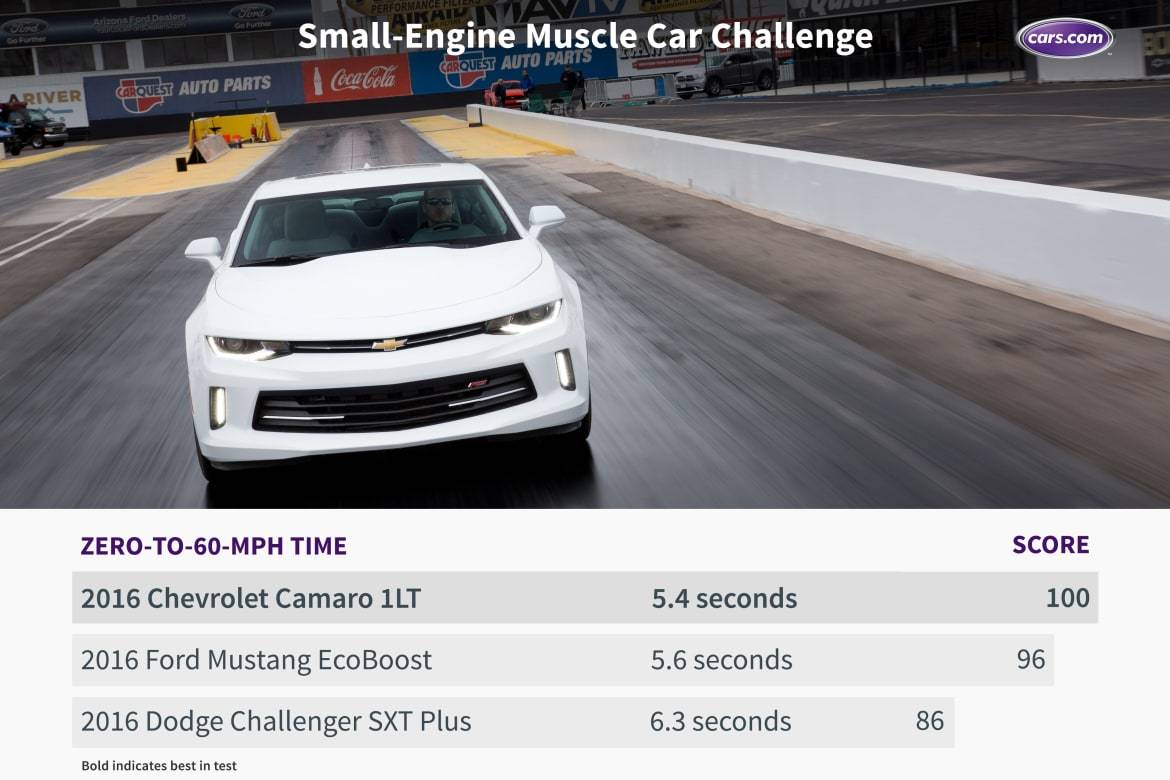
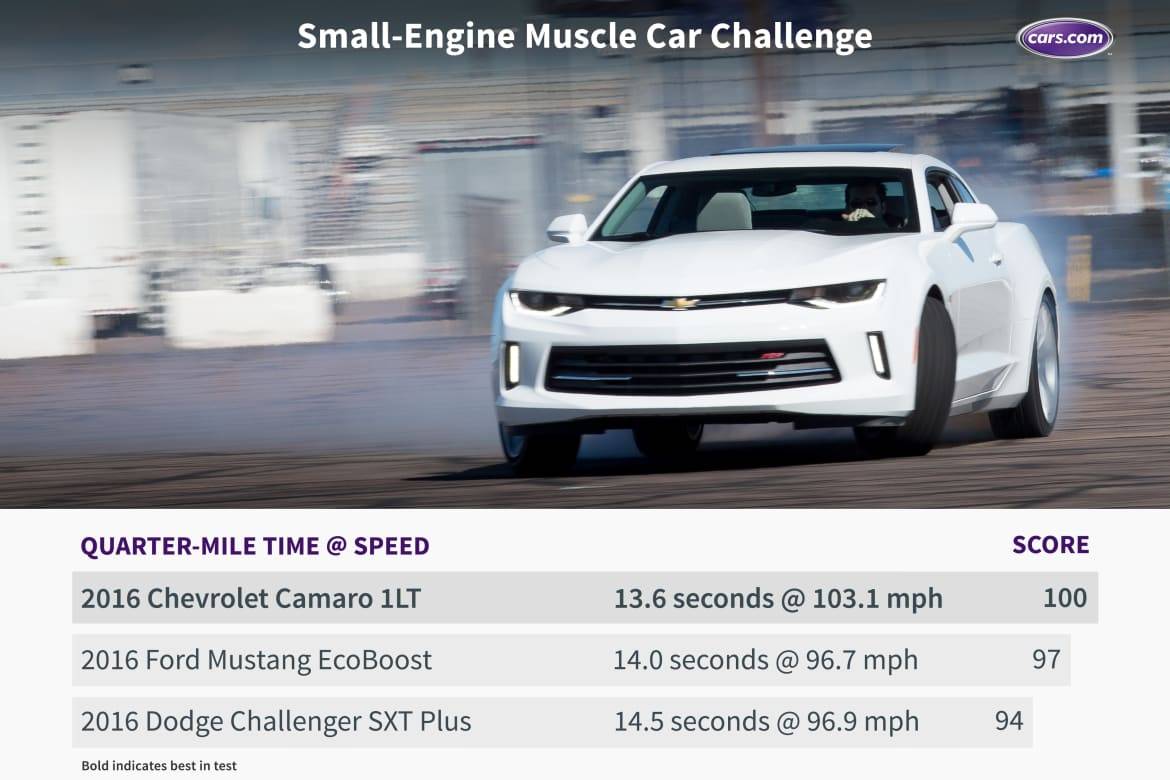
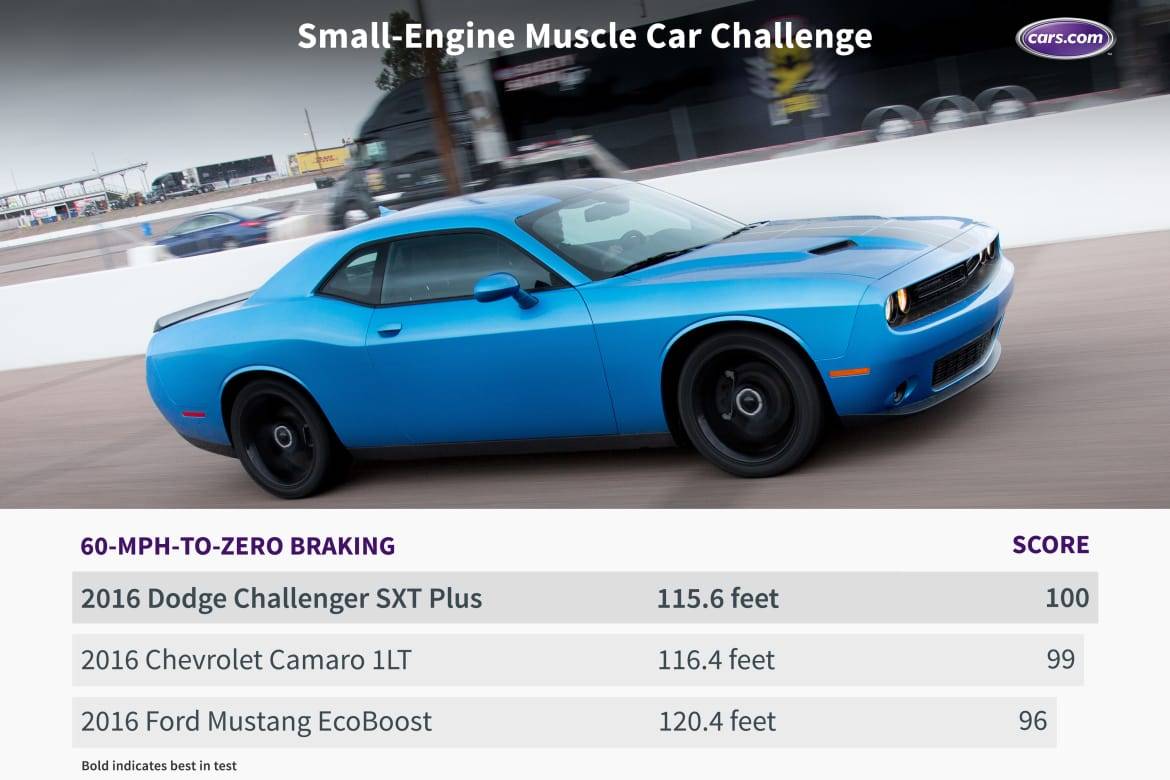



Acceleration
All three “entry-level” muscle cars have more than 300 horsepower, which is more than the V-8 versions of the Camaro and Mustang had in the not-too-distant past. In 2016, the Camaro pumps out the most, with 335 hp from its 3.6-liter V-6; the Mustang EcoBoost with half the cylinders of the Mustang GT has the help of a turbocharger, making 310 hp from its 2.3-liter four-cylinder. The Challenger’s 3.6-liter V-6 pumps out 305 hp. We requested automatic transmissions for these cars, which meant eight-speeds in the Camaro and Challenger, and a six-speed in the Mustang.
As we expected, the Camaro, with the most power and fewest pounds (3,434), ran away from the others in zero-to-60-mph time (5.4 seconds) and the quarter-mile acceleration (13.6 seconds at 103.1 mph). There was nothing to it except flooring the accelerator and hanging on. I was the test driver for all of the drag-strip tests.
There’s no drama here, just quick and consistent times from the Camaro V-6 with its aggressively geared eight-speed automatic transmission and effortless traction helping the car pounce off the line with just a stab of the accelerator. Perhaps most notable is that the Camaro does this with all-season tires compared with the others’ summer tires.
“The V-6 would chirp the tires off the line and occasionally going into 2nd gear, and the transmission was very well-behaved,” Executive Editor Joe Wiesenfelder said of the Camaro.
Next fastest, and next lightest at 3,615 pounds, the Mustang EcoBoost with its turbocharged four-cylinder required a little more work to click off its 5.6-second zero-to-60-mph and 14.0-second at 96.7 mph quarter-mile times. Our test car’s optional EcoBoost Performance Package included a 3.55 rear axle ratio with a limited-slip differential and summer tires.
The EcoBoost’s quickest times came by raising engine speed against the brakes to about 2,100 rpm before letting off the brakes and mashing the accelerator. Otherwise, the delay in responsiveness between mashing the accelerator and when the engine woke up added two- to three-tenths of a second to acceleration times.
Weighing in at 3,935 pounds with the least power, the Challenger SXT Plus was the pokiest of the bunch, though a deficient power-to-weight ratio compared with the others was managed well by the eight-speed transmission that helped the heavy coupe hit zero-to-60 mph in a respectable 6.3 seconds and accelerate through the quarter-mile in 14.5 seconds at 96.9 mph.
The Mustang EcoBoost made its advertised horsepower and torque ratings on premium gasoline, which is how we tested the ‘Stang, while the Camaro and Challenger both were filled with the recommended regular-octane fuel.
Braking
Completely out of left field, the Challenger stopped in the shortest distance during 60-to-zero-mph braking, edging out the Camaro’s 116.4 feet by hair at 115.6 feet. The Challenger’s optional performance brakes (part of the Super Track Pak option) with dual-piston front-brake calipers and larger front rotors with performance brake pads aren’t as serious as the braking hardware for the V-8-powered Challenger R/T Scat Pack, but with 300 fewer pounds likely over the nose, the V-6 Challenger stops with authority.
“Without a doubt, the biggest difference, and perhaps the biggest surprise to me from this group compared to the V-8s, was in the Challenger’s braking performance,” said “MotorWeek” producer Brian Robinson. “First lap out, having driven the Camaro and Mustang prior, I got on the brakes way too early. It took me two full sessions in the Challenger to really figure out how far and how hard I could brake into that corner; and it was way later than either the Camaro or Mustang.”
The Camaro’s impressive braking distance, not far behind the Challenger, didn’t mean the Camaro had a more confident braking experience even with the optional Brembo braking package, Wiesenfelder said.
“The numbers may look good, but the brake pedal is mushy and seriously nonlinear,” he said.
The Mustang had the longest braking distance at 120.4 feet, but that wasn’t indicative of how confident the pedal feels on a handling course. Our Mustang’s optional EcoBoost Performance Package included upgraded four-piston front-brake calipers and larger rotors in the front and rear.
On the street, the annoyingly hard brake pedal had all of its stopping power seemingly within an inch of movement. On the track, however, the Mustang’s brake pedal felt finely tuned and confident when coming down from speeds well over 60 mph in our braking test.
Handling
The Camaro V-6 shined on Wild Horse Pass Motorsports Park’s handling course; it was the most capable of the bunch. Its lightweight chassis, precisely tuned suspension and steering is more similar to sports coupes such as the Nissan 370Z than to the other muscle cars. This feat was made more impressive by the Camaro’s all-season tires compared with the Mustang and Challenger’s summer tires.
“The car is light, and it feels that way, on both the street and the track. The excellent handling rises above the level of muscle car and into the realm of sports cars,” Wiesenfelder said.
Cars.com Detroit Bureau Chief Aaron Bragman agreed. “Despite the low-rent interior, the Camaro V-6 feels most like a true sports car to me on the track. Light, quick and responsive. Both it and the Camaro SS [from our V-8 Challenge] feel like the best-balanced cars here, with the best suspension setup and most neutral weight balance.”
The Camaro V-6 wasn’t without criticism, considering I barely fit in the car while wearing a helmet. The Camaro’s optional sunroof got in the way.
I know most people won’t have to deal with helmets in V-6 Camaros, but this is a truly capable track car that I find less desirable to take back out on the road course because I hate the seating position I’m forced into while wearing a helmet.
Less capable, but possibly more fun than the Camaro, the Mustang proved a favorite on the handling course because it wasn’t entirely planted and composed like the unflappable Camaro, reminding Bragman of a more powerful, roomier Scion FR-S.
“I was really surprised at how tossable it is. The Mustang EcoBoost feels like a lighter car than it is,” he said. “I have a hard time comparing it to other V-6 models, however — I actually would put it up against something like an FR-S. The prices match up well if you forgo the navigation and automatic transmission. The Mustang is quicker, more stylish, roomier by far; a really interesting alternative to other small four-cylinder sports cars.”
Then there’s the Challenger SXT, which is a fish out of water on the handling course. The Challenger was held back by a fair share of concerns, even with the optional Super Track Pak featuring summer tires, and performance steering and suspension options. The transmission was one of those issues, featuring a mind of its own, Robinson said.
“Perhaps more frustrating [than the bad handling] was the transmission,” he said. “If you didn’t trigger a shift at exactly the right time it would give you a ‘Shift unavailable at this time’ message and let you just run around on the rev limiter.”
Robinson wasn’t the only to experience an issue with the Challenger’s transmission.
“The SXT also had the least-responsive transmission, regardless of mode, and considering it had eight speeds to work with, the paddles were often unresponsive for no clear reason,” Wiesenfelder said.
Overall, the Challenger is best left to street duty and looking good, Bragman said.
“Oh, it was just so unhappy out on the track; not enough power, a transmission that didn’t like being manually shifted. Really, this thing just isn’t suited to this kind of driving. The weight is the biggest problem, with it rolling into corners and making for a lot of understeer,” he said.
How We Conducted the Testing
All acceleration data was recorded at the Wild Horse Pass Motorsports Park drag strip with a RaceLogic VBOX II GPS data logger. Weather during our testing saw a high of 51 degrees, but data has not been corrected for atmospheric conditions. We used the drag strip’s method of measuring quarter-mile acceleration with a 1-foot rollout accounting for the distance a front wheel moves in the timing beam before rolling out of the beam and triggering the timing system, which is typically a few tenths faster than not including rollout. Zero-to-60-mph times are raw times from a standstill and do not include 1-foot rollout.
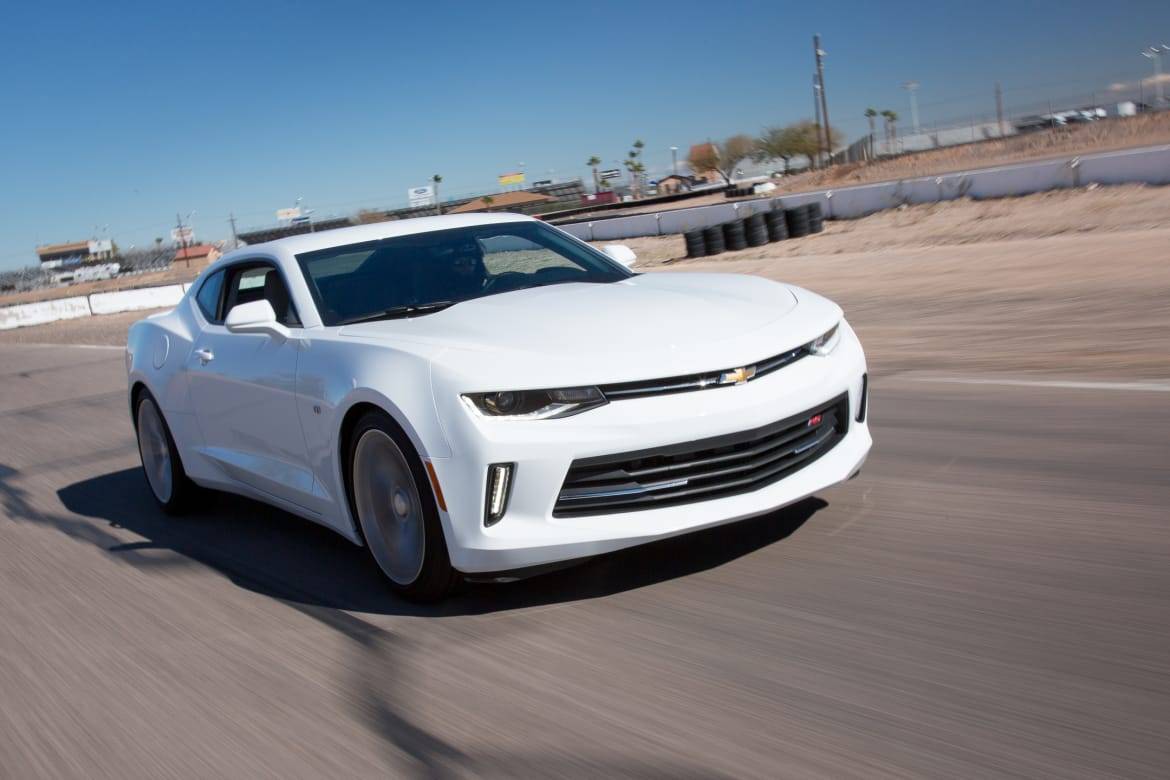
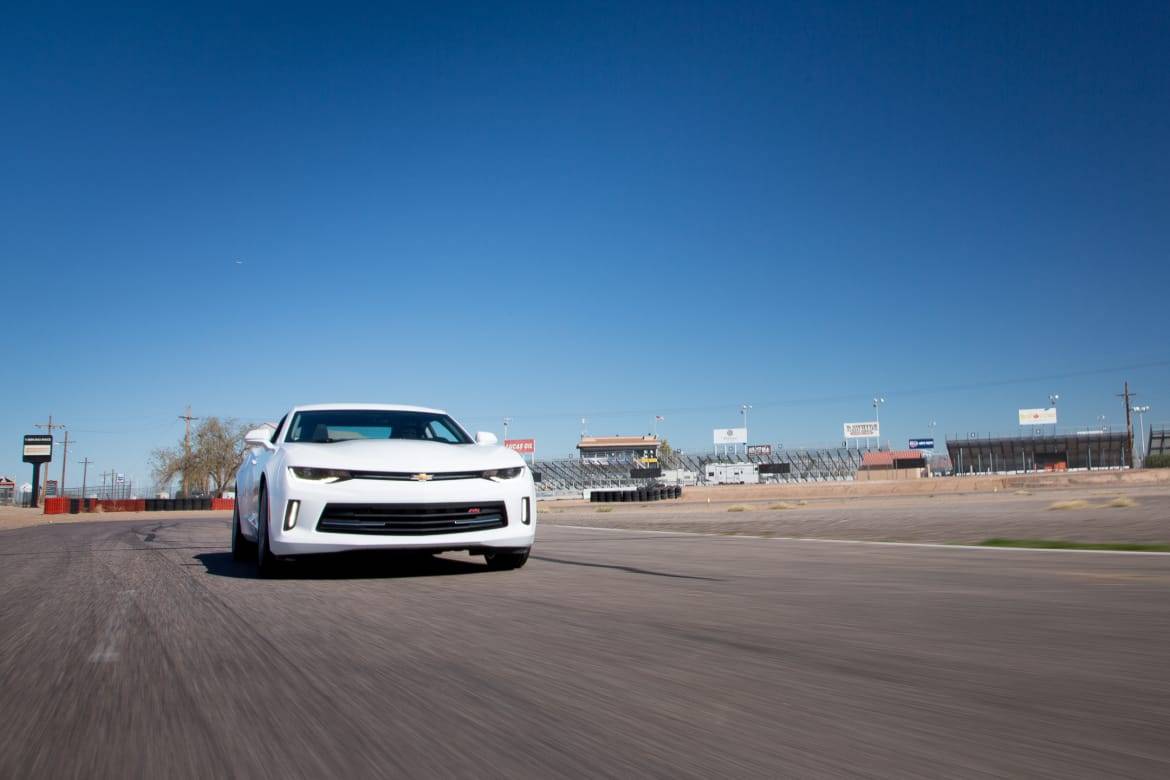
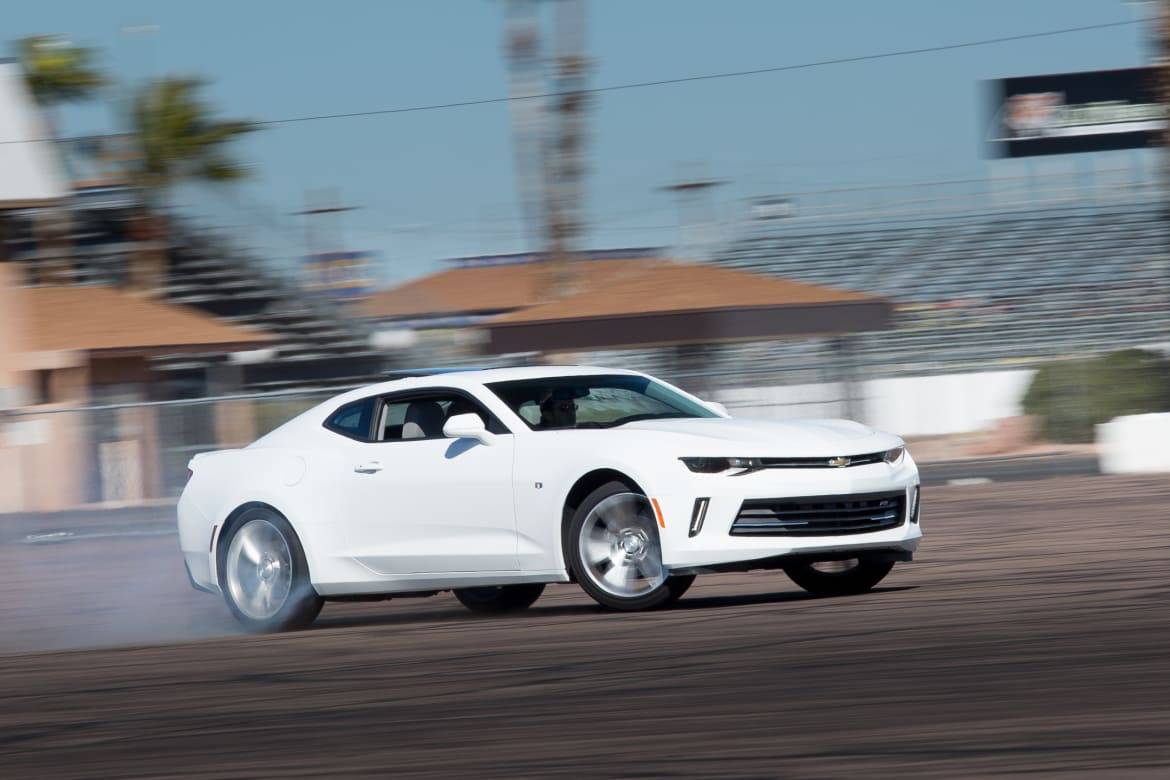
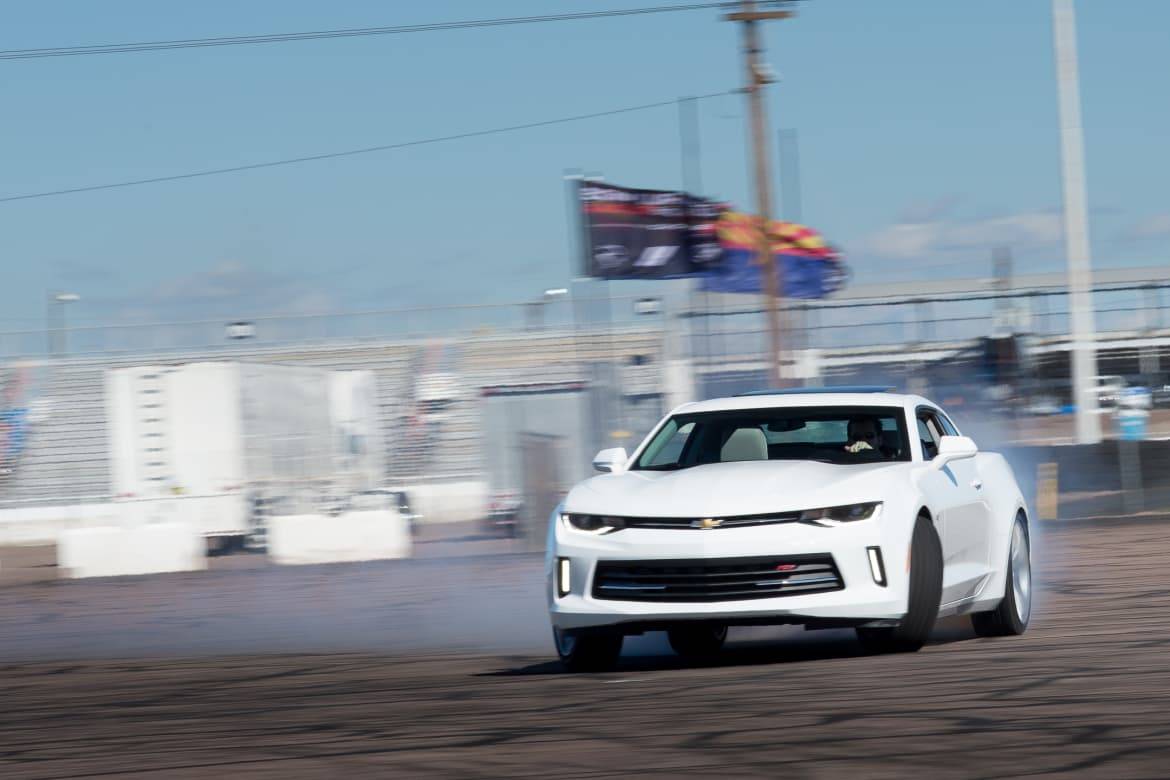
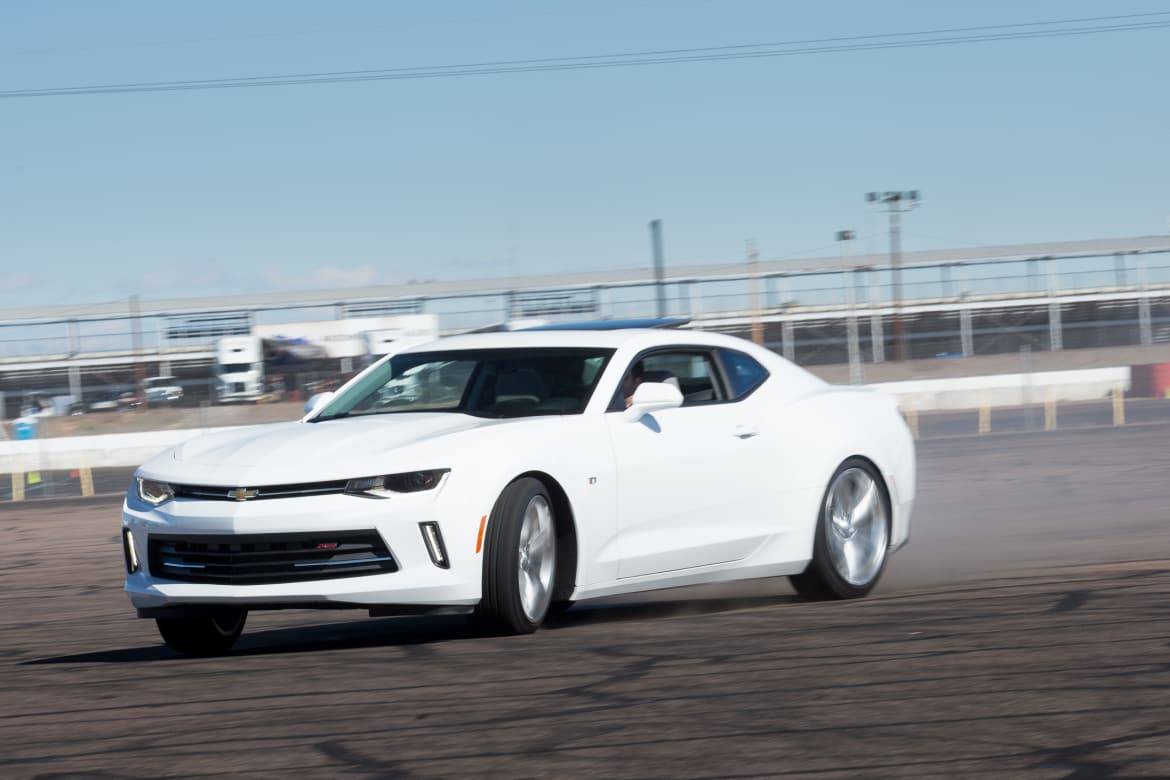
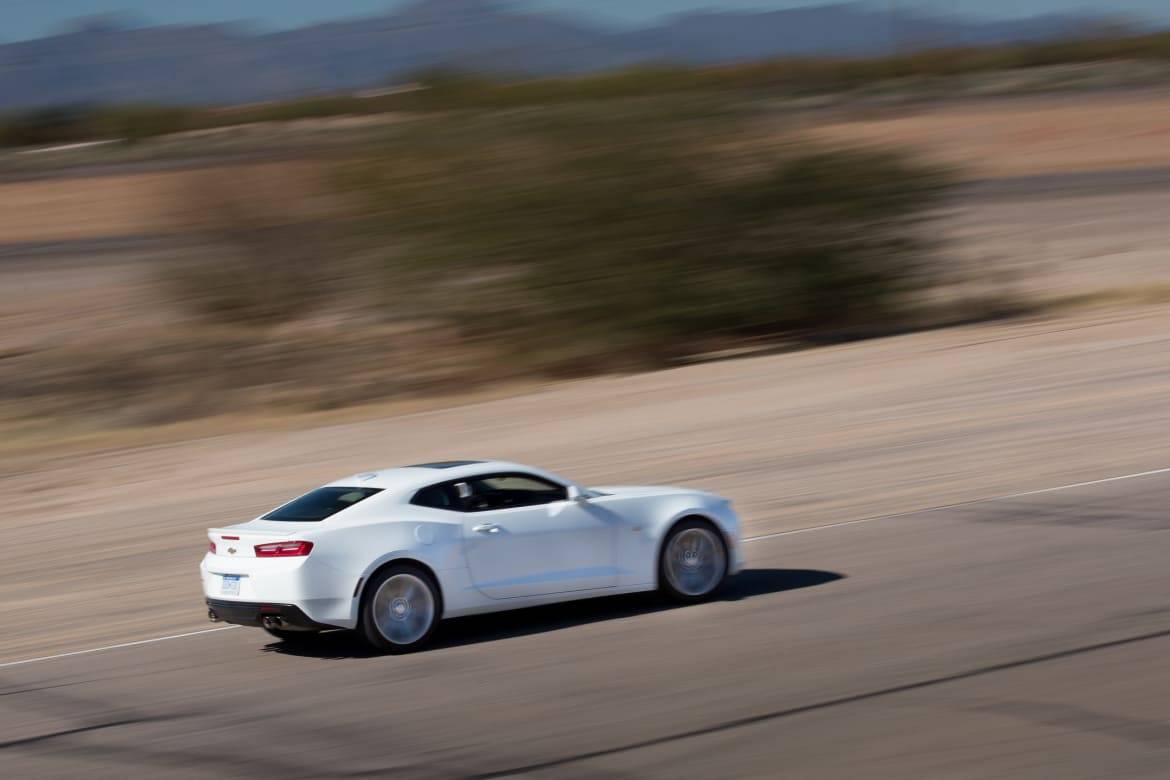
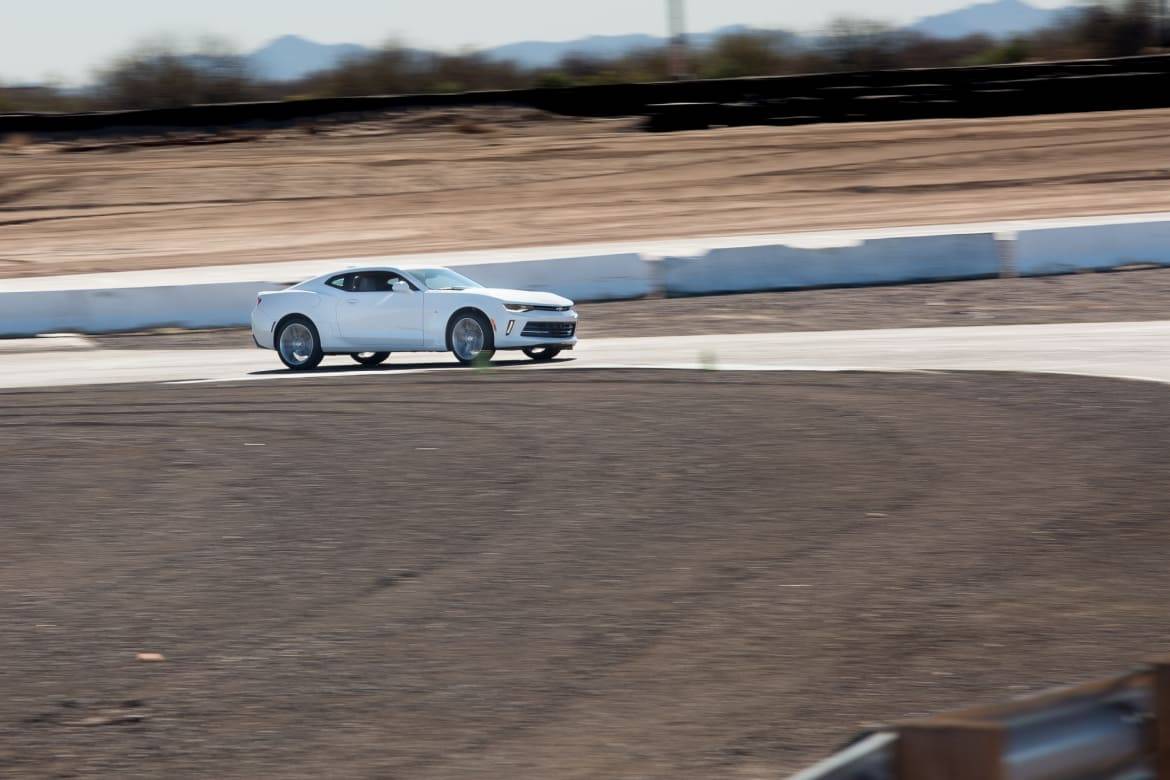
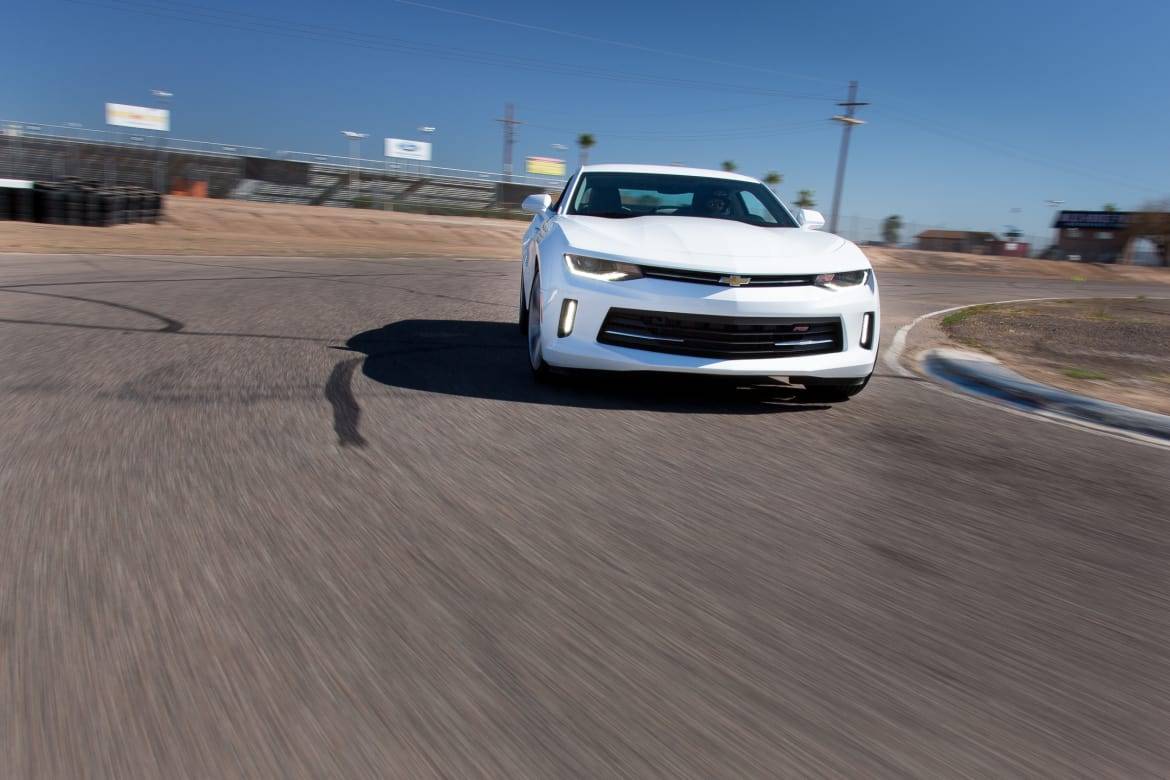

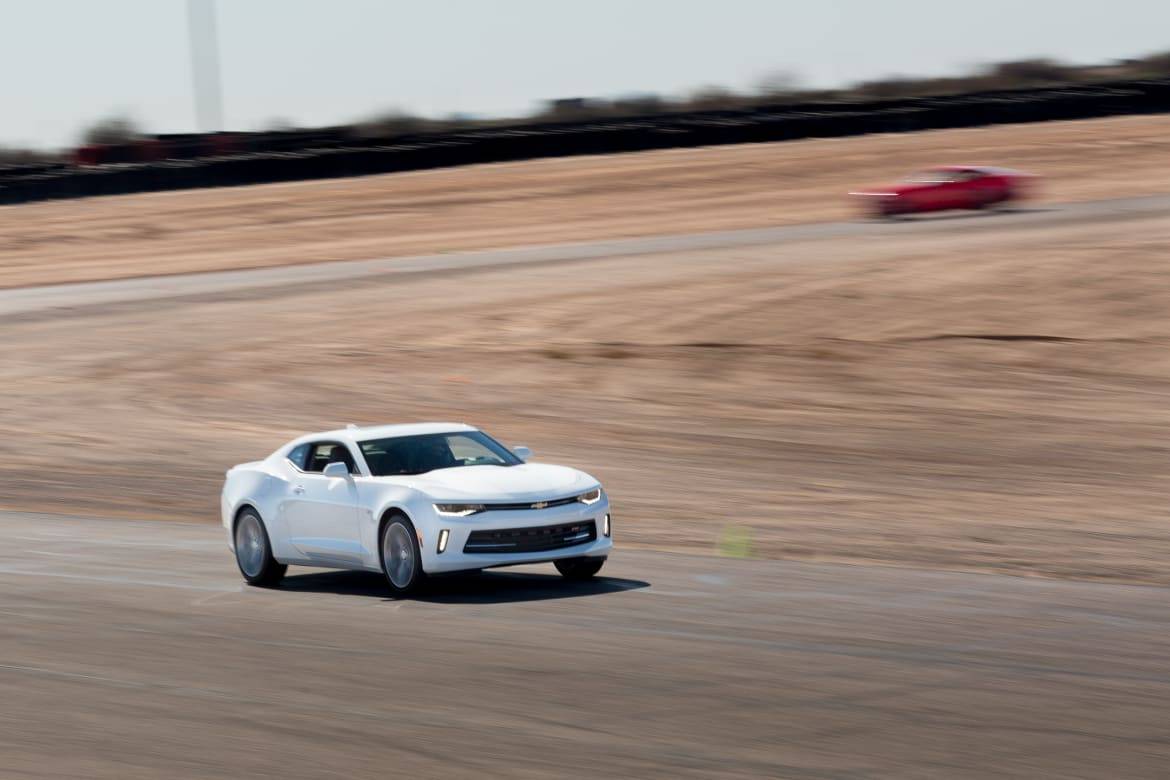
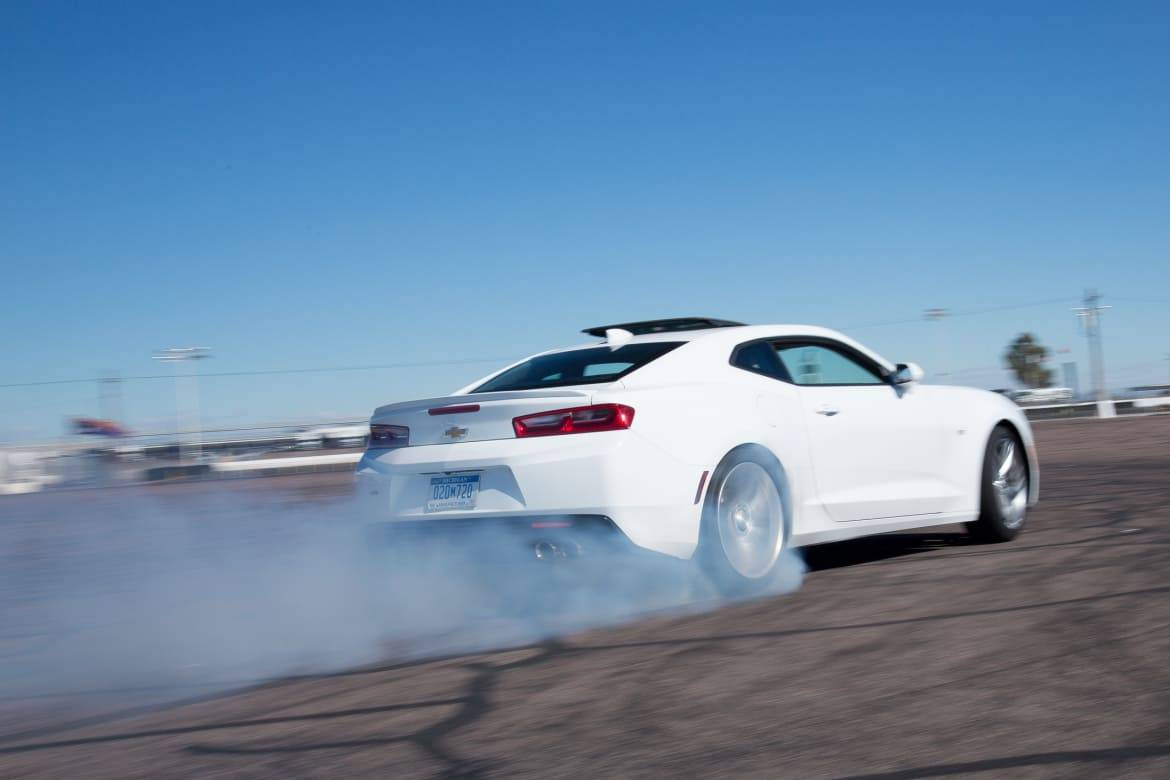

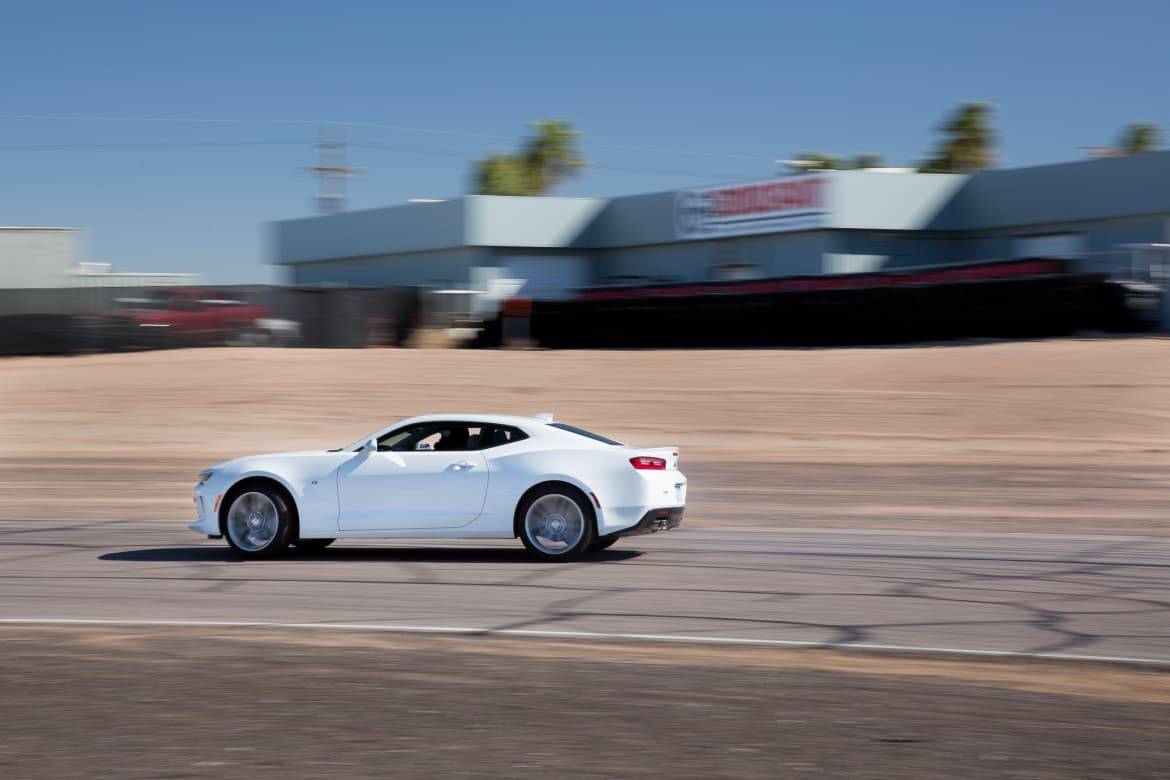
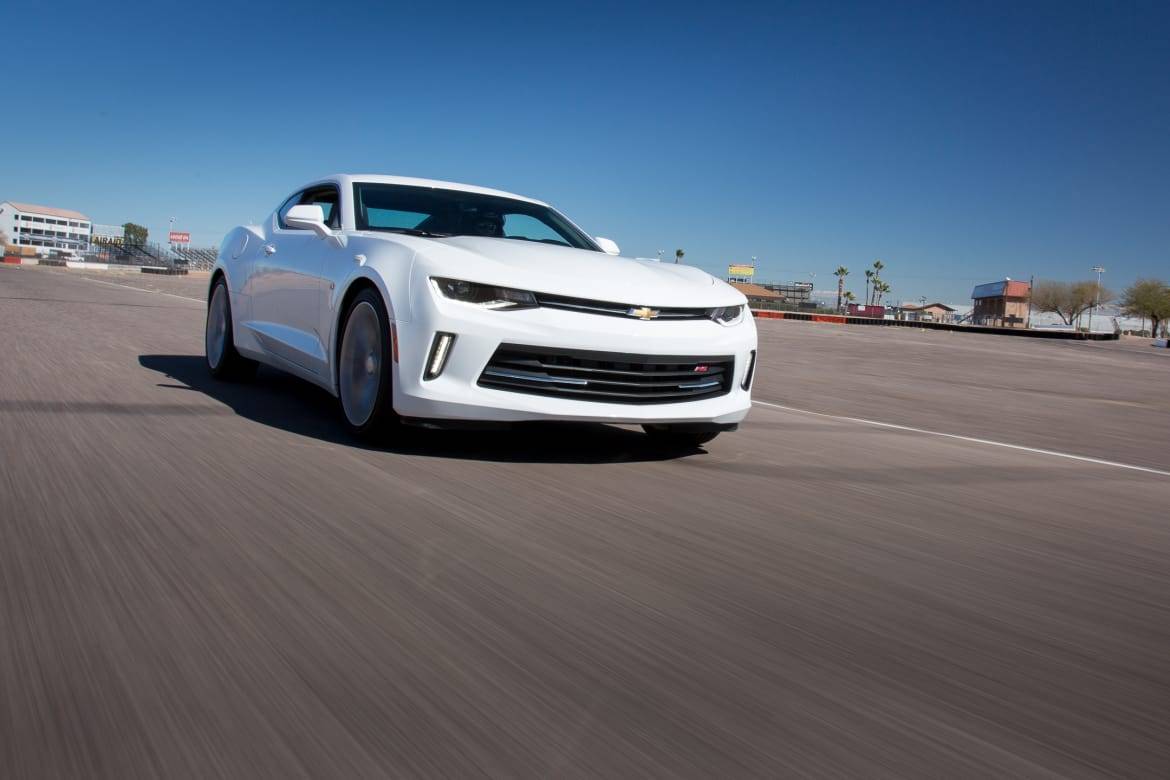
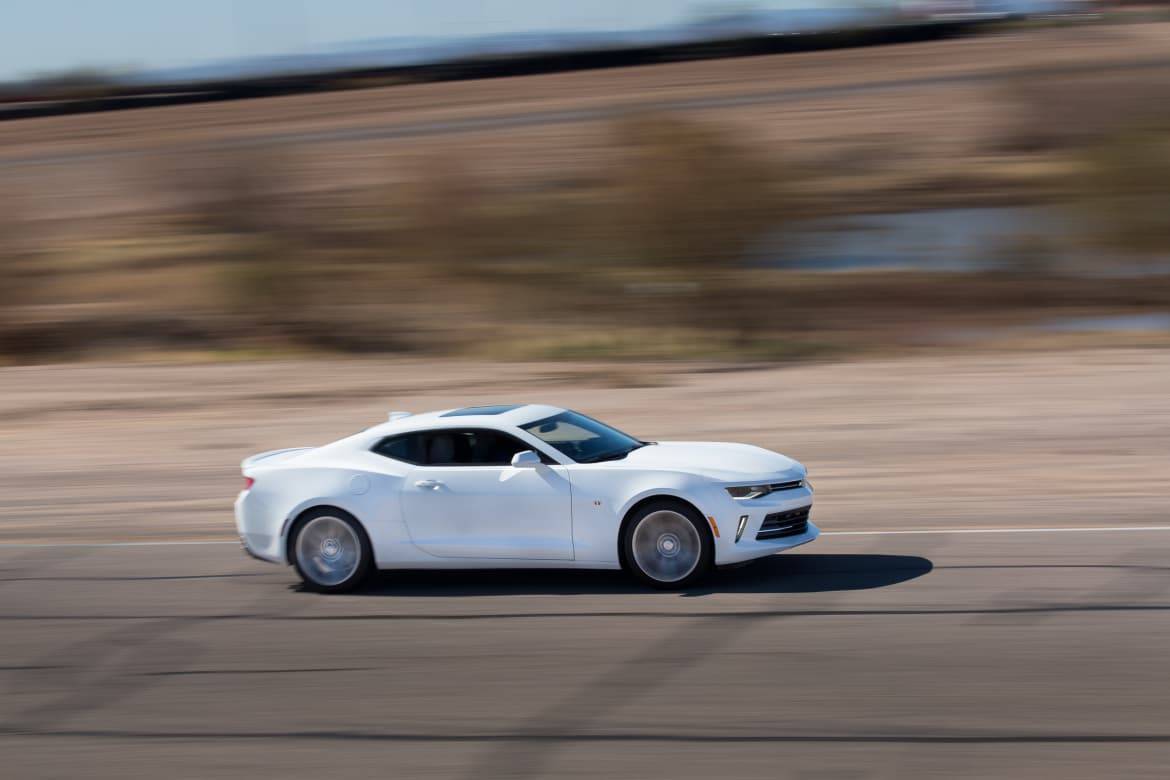

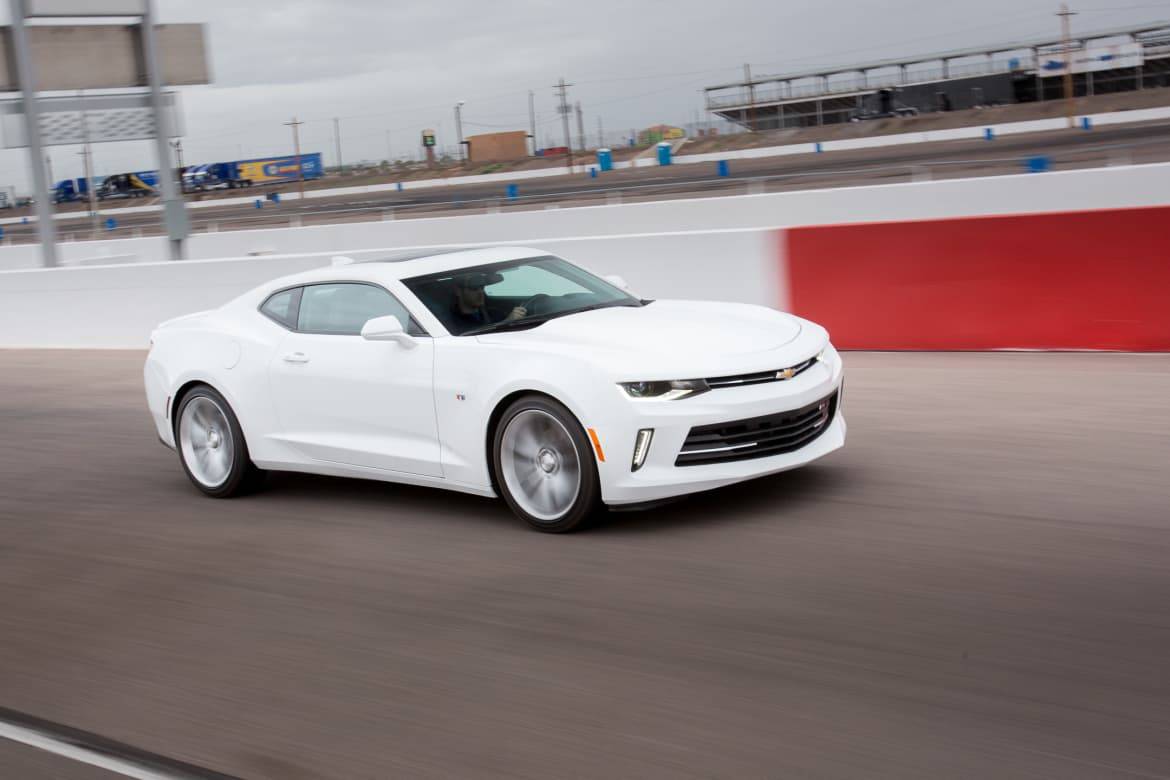
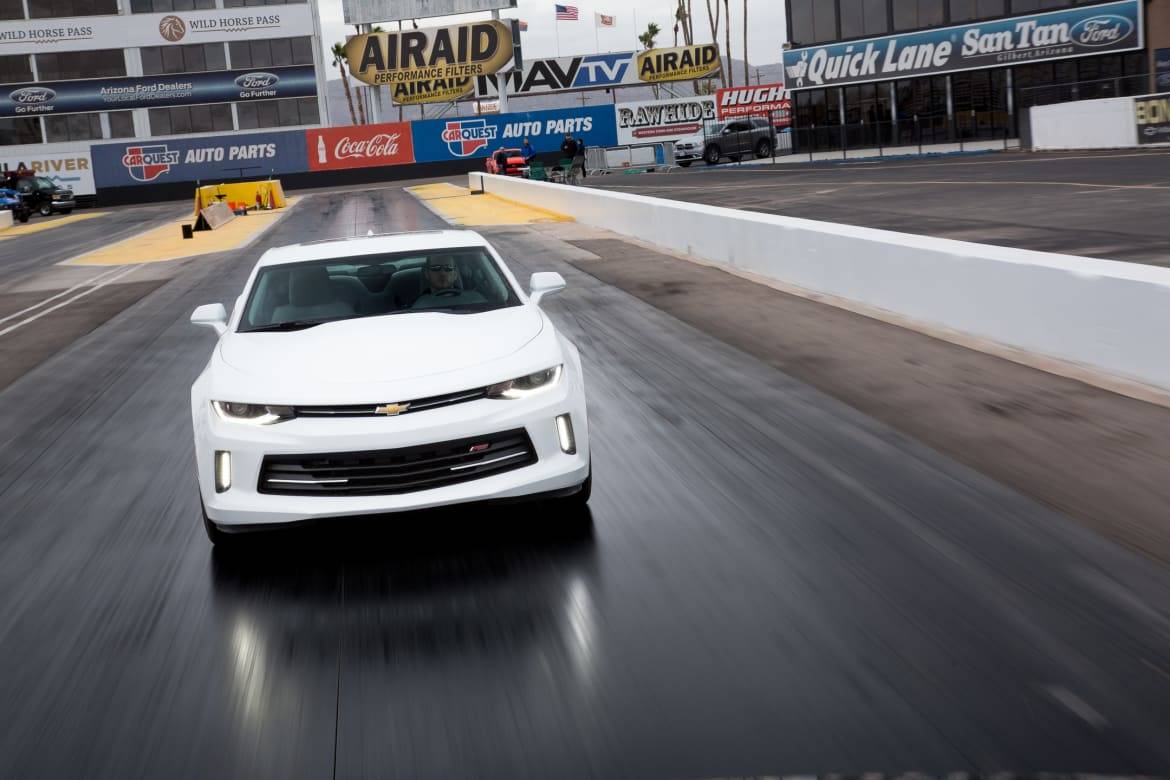
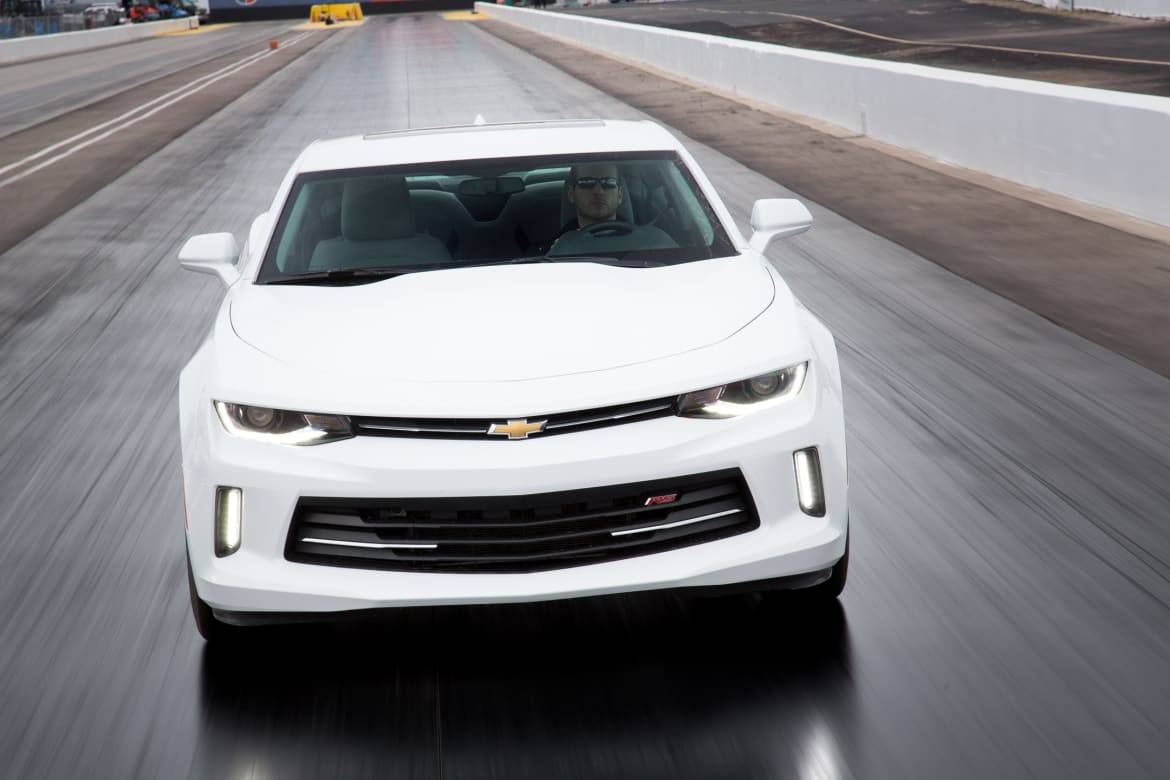











































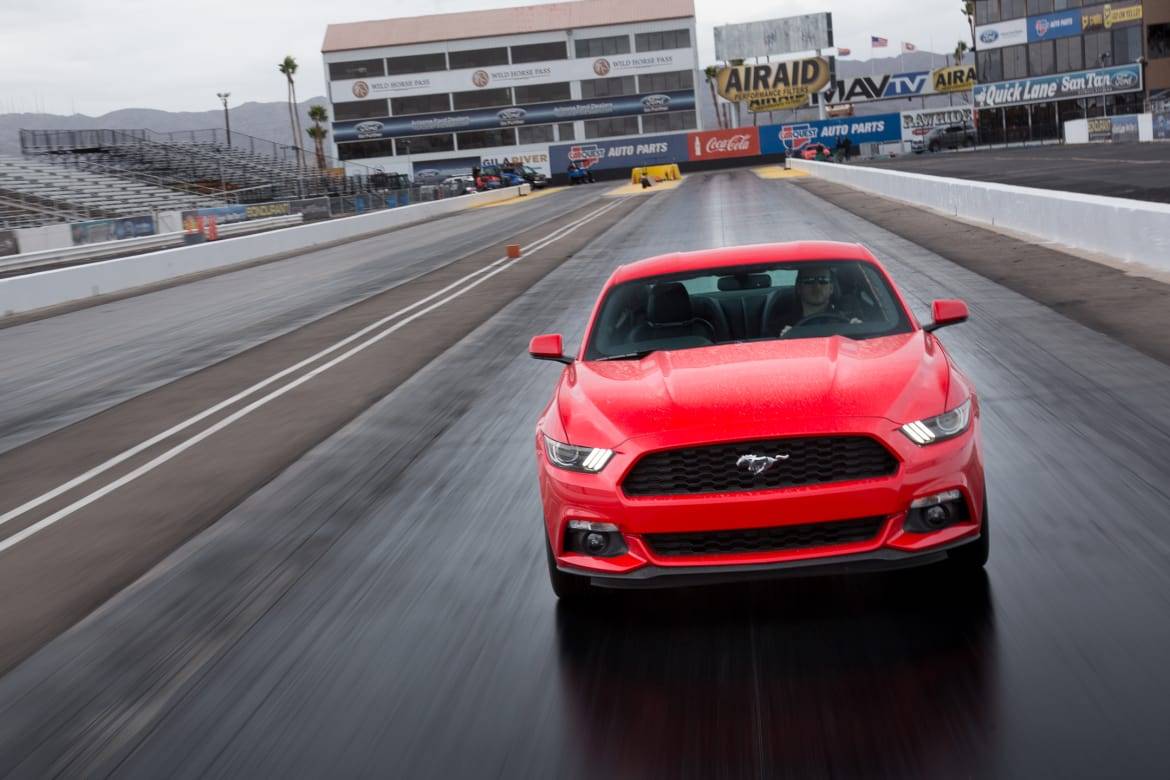
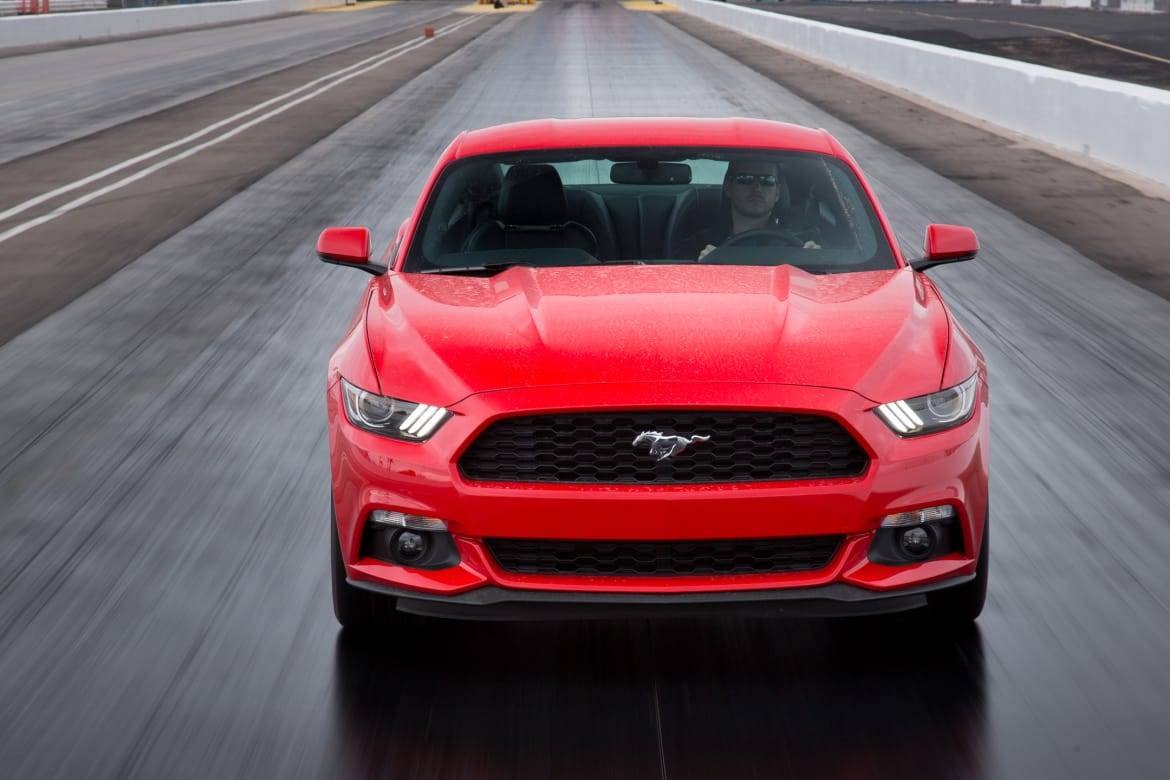
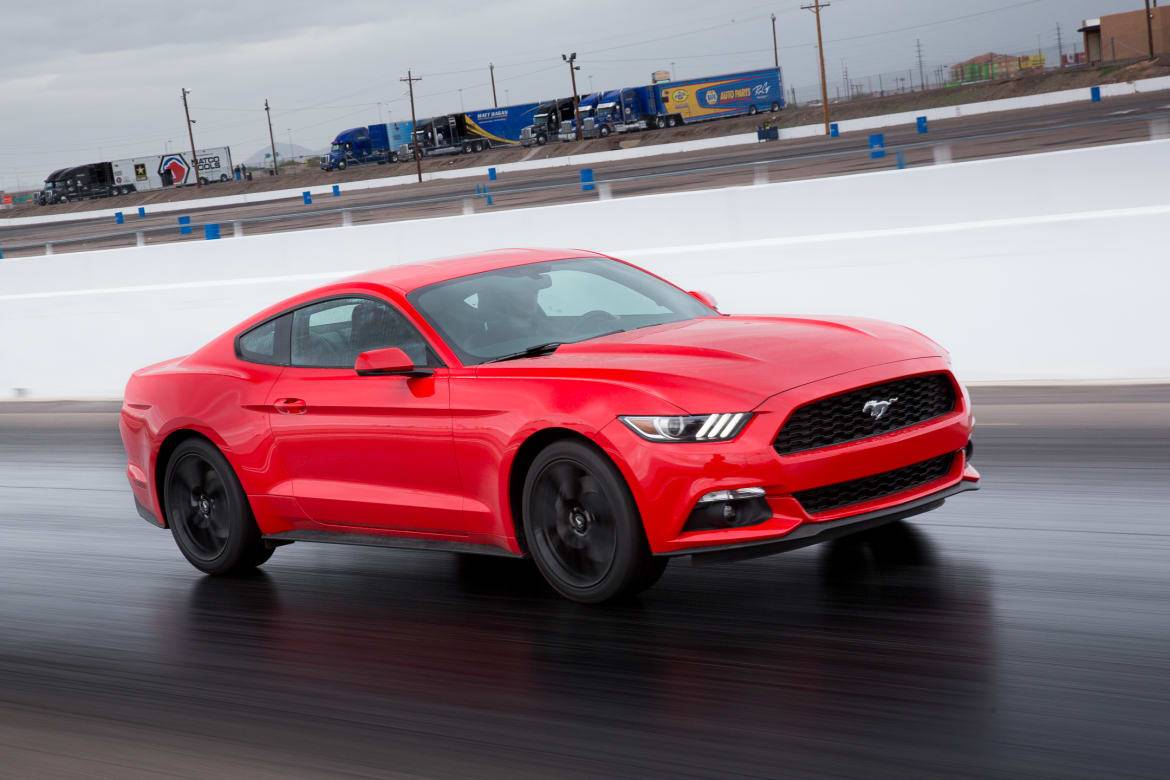
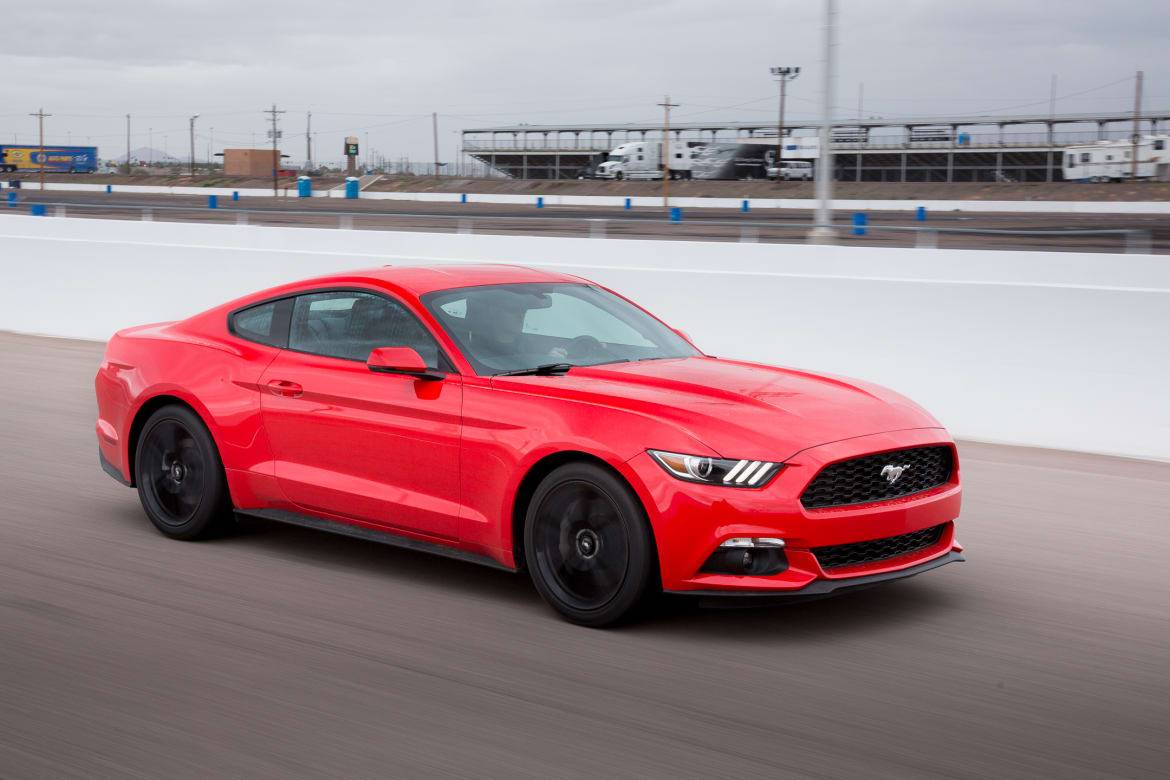
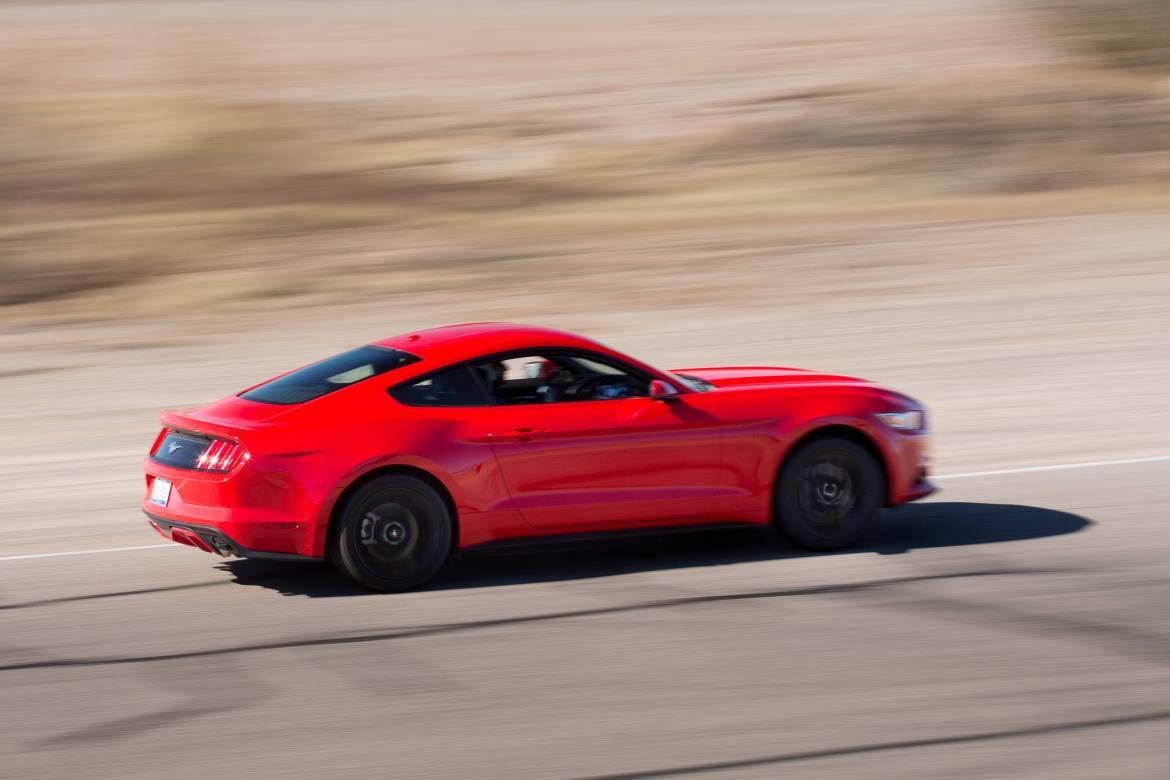
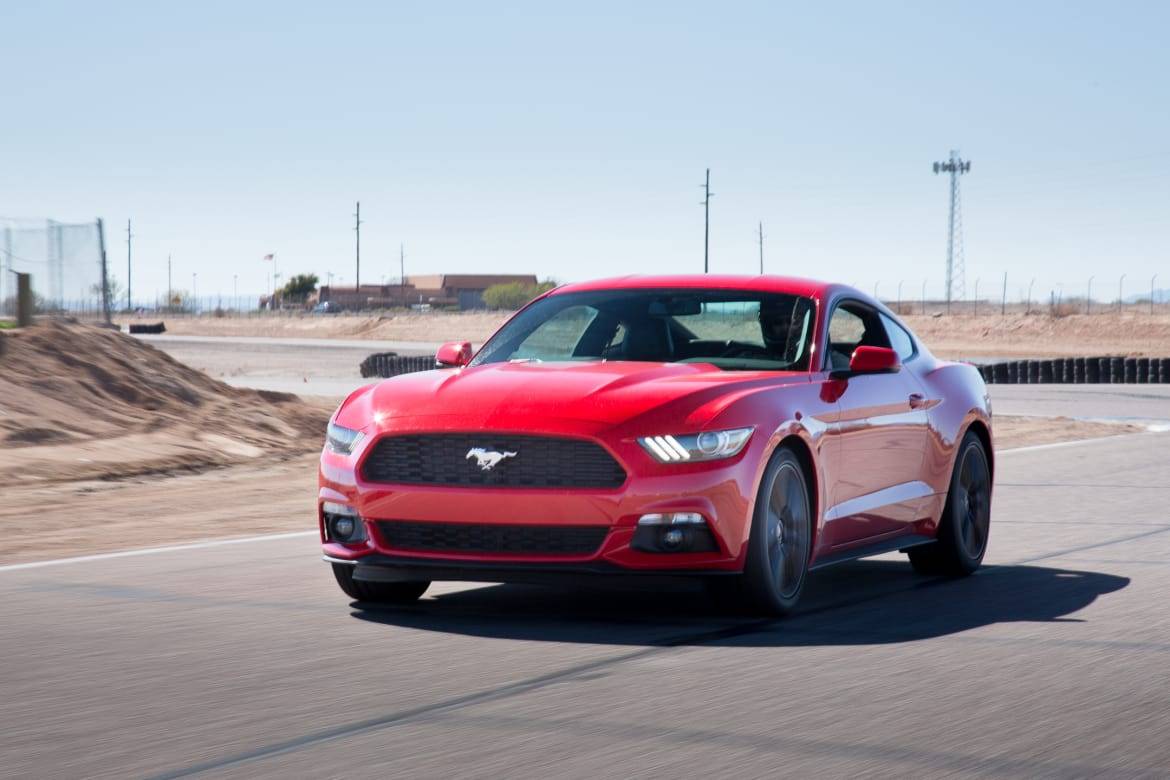
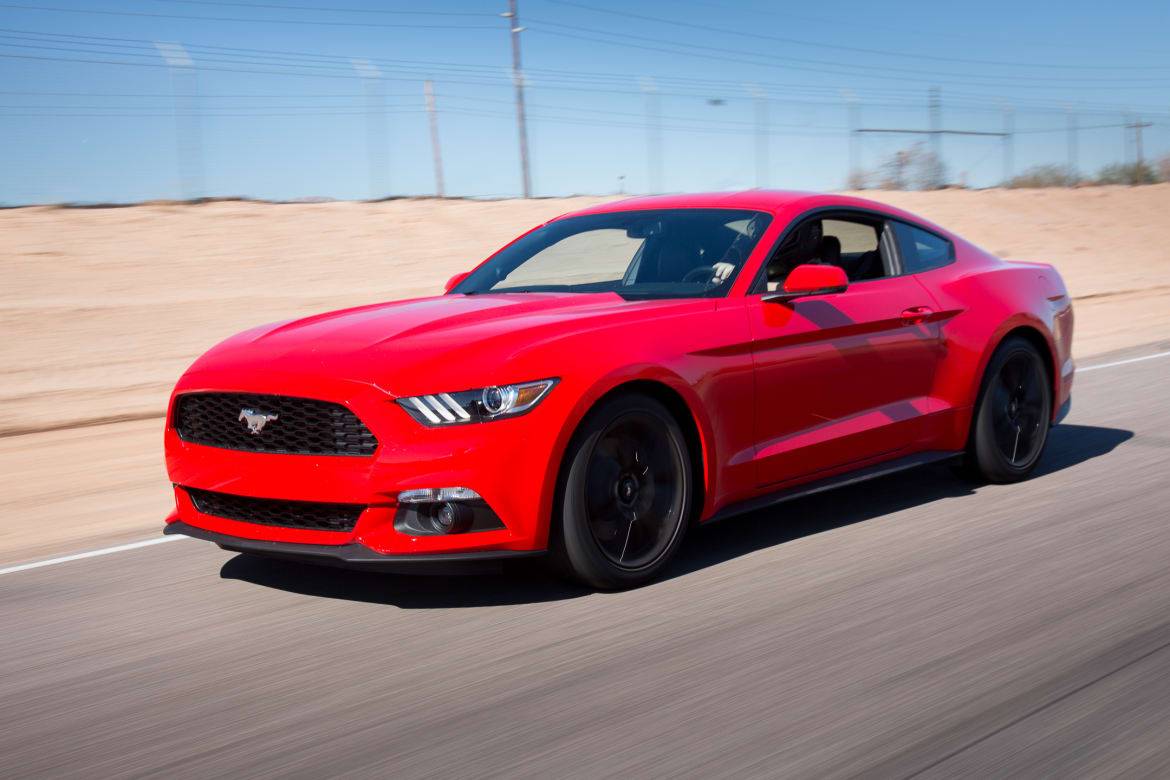
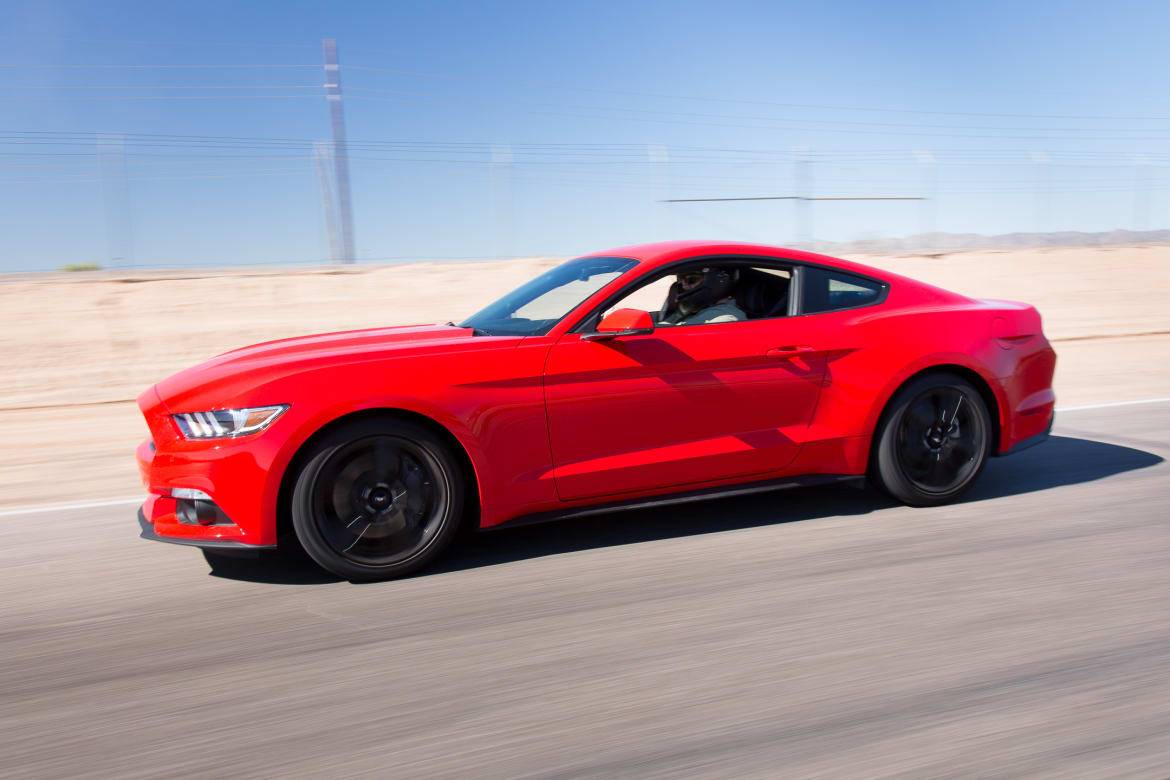

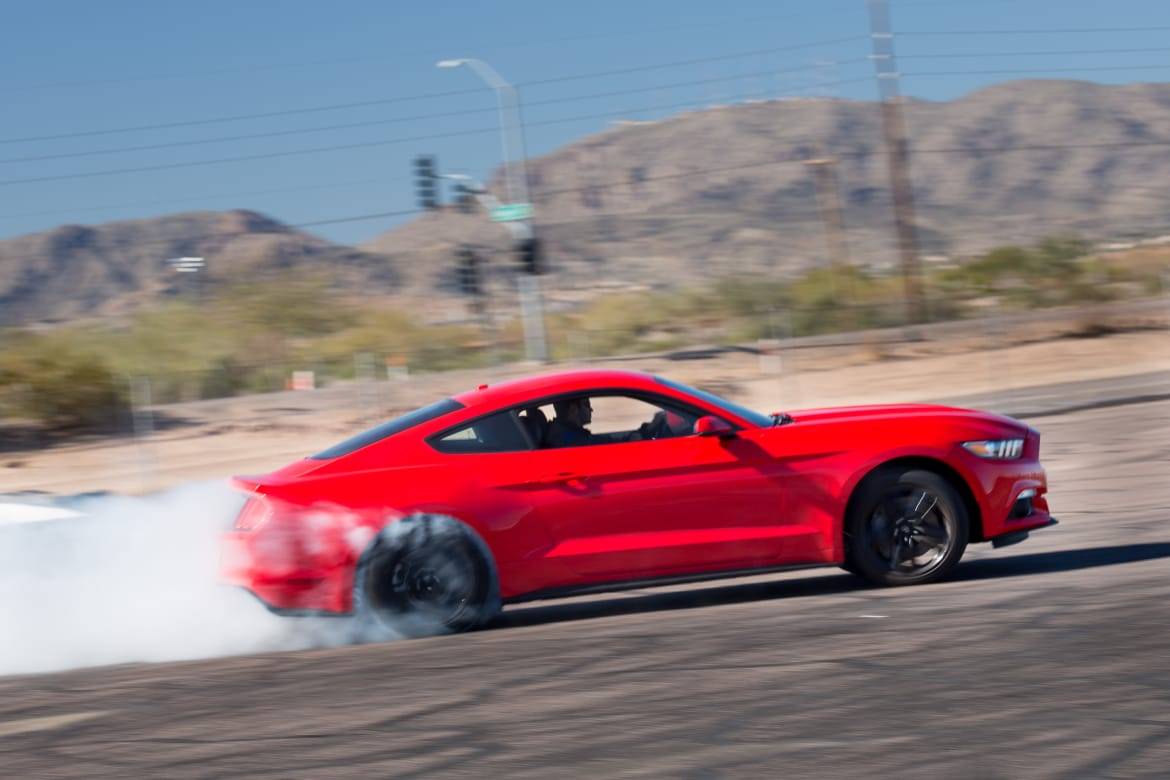











Managing Editor Joe Bruzek’s 22 years of automotive experience doesn’t count the lifelong obsession that started as a kid admiring his dad’s 1964 Chevrolet Corvette — and continues to this day. Joe’s been an automotive journalist with Cars.com for 16 years, writing shopper-focused car reviews, news and research content. As Managing Editor, one of his favorite areas of focus is helping shoppers understand electric cars and how to determine whether going electric is right for them. In his free time, Joe maintains a love-hate relationship with his 1998 Pontiac Firebird Trans Am that he wishes would fix itself. LinkedIn: https://www.linkedin.com/in/joe-bruzek-2699b41b/
Featured stories







